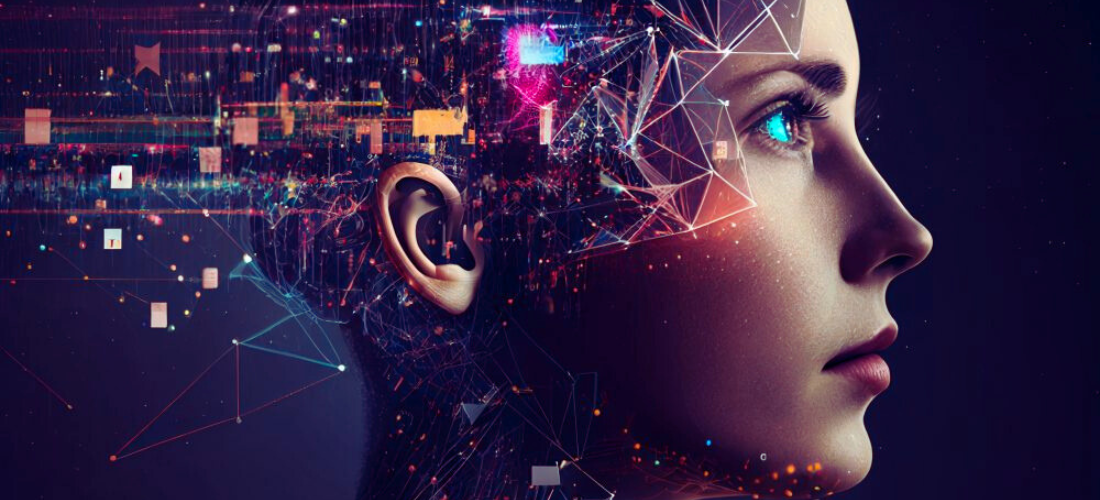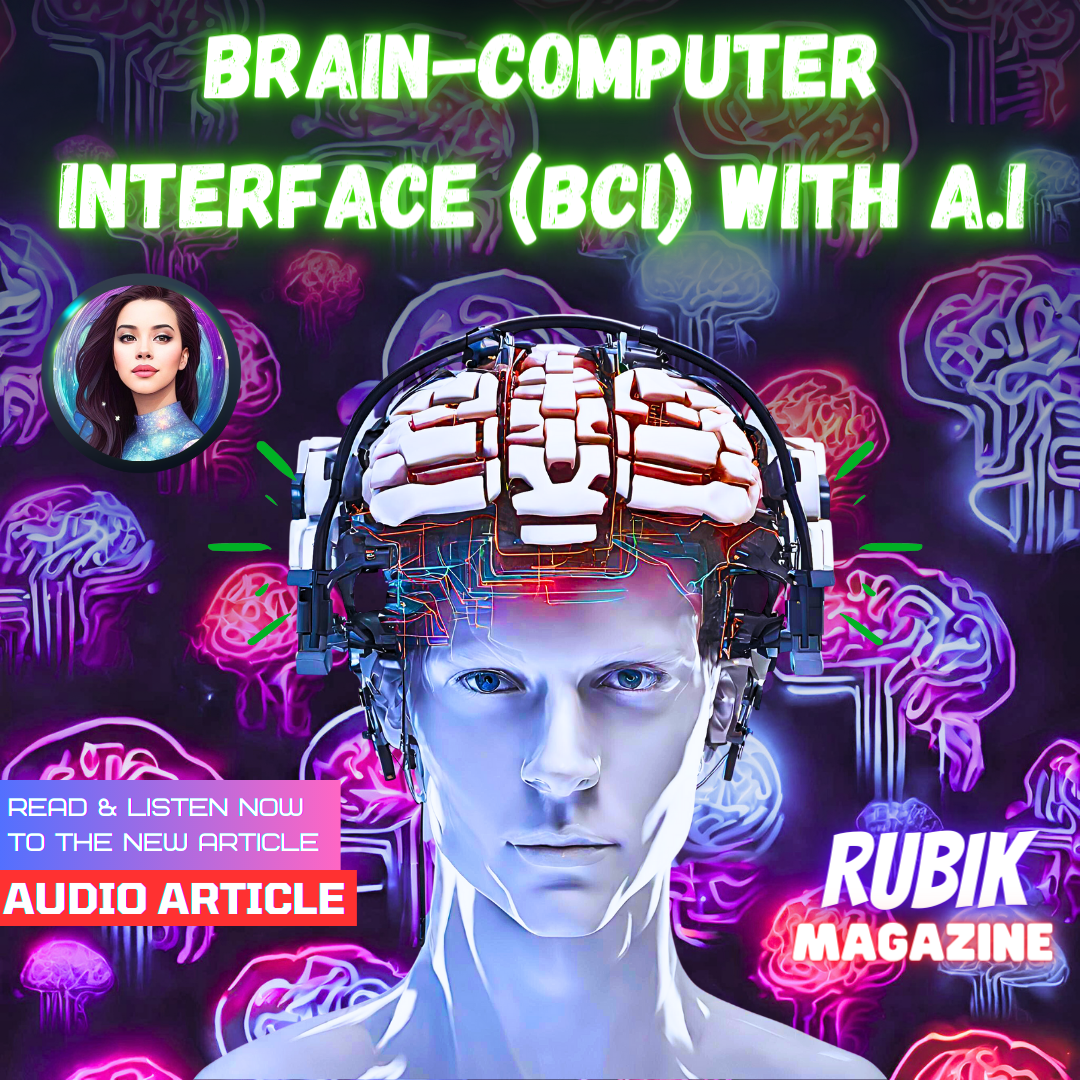Brain-Computer Interface (BCI) with Artificial Intelligence

Introduction
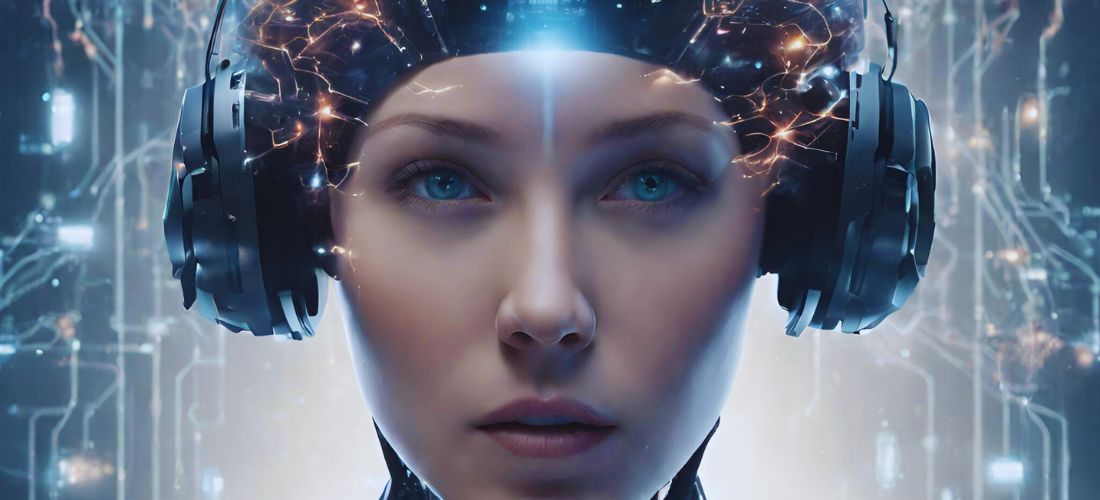
The field of Brain-Computer Interface (BCI) with Artificial Intelligence (AI) has emerged as a fascinating and transformative discipline in the field of computer engineering. This article will delve into the technical foundations of BCIs, the integration of AI in the interpretation of brain signals, examples of applications, and the challenges that this constantly evolving technology faces. We will also explore the exciting future that awaits.
At the heart of this discipline are BCIs, systems that enable direct communication between the human brain and computers. We will begin by unraveling the fundamental principles that govern the acquisition and processing of brain signals, as well as the sensors used in this task.
What makes BCI with AI particularly impactful is its seamless incorporation of Artificial Intelligence. As we progress through this article, we will discover how AI algorithms, including machine learning and deep neural networks, enhance the accuracy in signal classification, opening the doors to remarkable applications in medical and technological fields.
However, as with any innovative advancement, challenges arise. We will address the technical and ethical obstacles that BCI with AI faces, from data security to privacy considerations. We will also contemplate the exciting landscape on the horizon, a future filled with promises and advancements in this ever-evolving technology.
Join us on this journey, where the boundaries between science fiction and reality blur, and where the convergence of human intelligence and artificial dexterity propels us toward an exciting tomorrow.

The Importance and Applications of This Technology
Brain-Computer Interface (BCI) with Artificial Intelligence (AI) is not only a rapidly growing field of study but also a transcendent bridge between human cognitive ability and the boundless potential of technology. Its significance lies in its capacity to revolutionize how we interact with the digital world and how we understand and harness the power of the human brain.
One of the most notable applications of this technology is in the field of medicine. BCI with AI enables doctors and scientists to understand and respond to patients' brain signals more precisely than ever before. This has led to significant advancements in the early diagnosis and rehabilitation of neurological diseases, such as Parkinson's or paralysis. Additionally, BCIs also hold the promise of restoring mobility and communication to individuals with severe disabilities.
In the realm of technology, BCI with AI has opened new doors in human-machine interaction. Imagine controlling your smartphone or computer by merely thinking about the actions you wish to perform. This not only improves accessibility for people with disabilities but also has applications in task automation and virtual reality.
Security and defense also benefit from this technology, as BCIs can be used to enhance efficiency and speed in decision-making during critical situations. Aircraft pilots, for example, can interact with their flight systems more quickly and accurately through AI-enhanced BCIs.
Furthermore, in an increasingly connected world, BCIs with AI have the potential to transform how we consume content and communicate. Imagine reading a book or watching a movie just by thinking about it or sending messages to your friends without even touching a keyboard. These applications are continually developing and promise to change the way we live and work in the future.
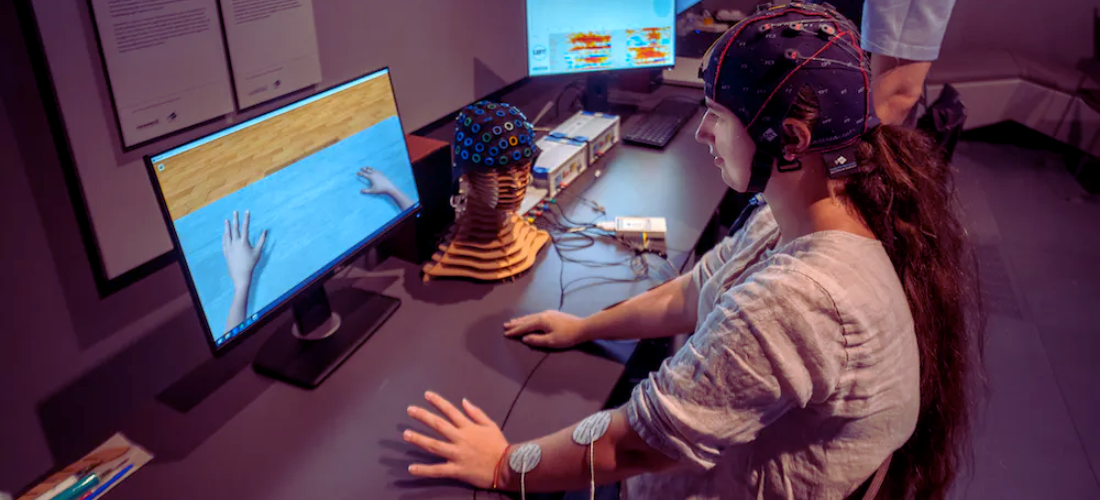
BCI: Technical Foundations
In the fascinating world of Brain-Computer Interface (BCI) with Artificial Intelligence (AI), the technical foundations are the cornerstone upon which this innovative discipline is built. We will explain in detail the essential components that make the connection between the human brain and computers possible.
BCIs are designed to act as a bridge between the human mind and digital technology. To fully understand this technology, we must first delve into the understanding of brain signals. The human brain generates an astonishing amount of information through electrical signals, and BCIs are designed to detect and translate these signals into commands understandable to computers. The sensors used to capture these signals, such as electroencephalograms (EEG) or electrocorticograms (ECoG), are fundamental to this process.
Data preprocessing plays a critical role in the accurate interpretation of brain signals. In this stage, captured data is filtered, amplified, and processed to remove noise and enhance signal quality. This step is crucial to ensure that computers accurately interpret the user's intentions.
The key to the success of BCIs lies in the understanding and interpretation of these brain signals. This involves the development of advanced algorithms that translate the signals into understandable commands for computers. Artificial Intelligence (AI) plays a fundamental role here, as machine learning techniques and deep neural networks are used to improve the accuracy of signal classification.
As we delve into the technical foundations of BCIs, we must recognize that this technology is truly interdisciplinary. It combines knowledge from neuroscience, electronic engineering, signal processing, and computer science. This multidisciplinary approach is essential to fully appreciate how BCIs can translate brain activity into concrete actions.
The technical foundations of BCIs are the bedrock upon which this revolutionary technology is built. Understanding brain signals, the sensors used, data preprocessing, and AI algorithms is essential to appreciate how BCIs are transforming how we interact with technology and opening new frontiers in mind-machine communication.
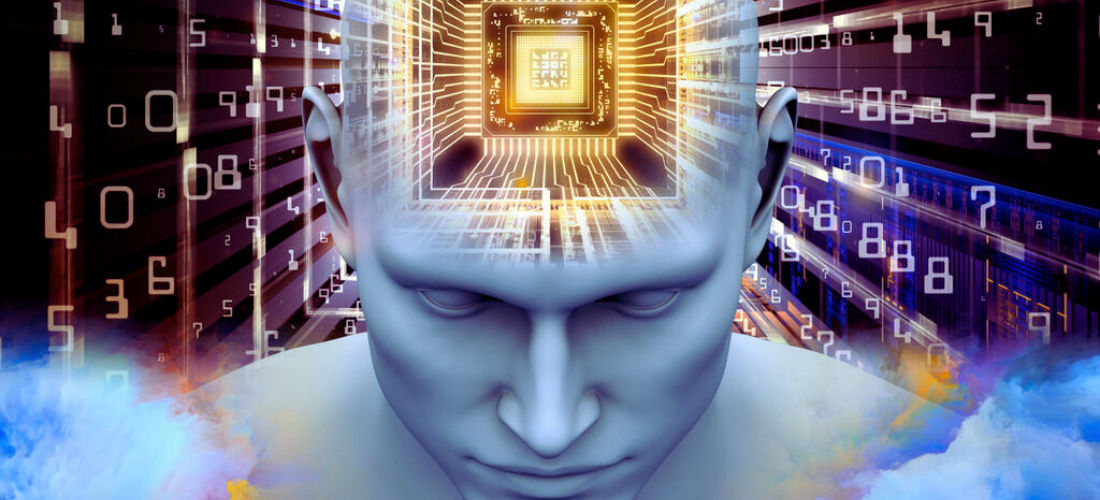
Artificial Intelligence in BCI
The incorporation of Artificial Intelligence (AI) into Brain-Computer Interface (BCI) has taken this technology to an entirely new level. We explore in-depth how AI has transformed the interpretation of brain signals and made a wide range of impressive applications possible.
One of the most exciting aspects of AI in BCIs is its ability to decode and understand the complex signals generated by the human brain. When we talk about brain signals, we are dealing with highly nonlinear and multidimensional data. BCIs with AI use advanced machine learning algorithms to effectively analyze and classify these signals. This allows computers to interpret thoughts, intentions, and commands from the user with unprecedented accuracy.
Machine learning algorithms used in BCIs can classify a wide variety of brain signals, from patterns of neuronal activity to changes in brainwaves. As more data is collected, and signal quality improves, AI becomes even more precise in interpreting the user's intentions.
Deep neural networks, a branch of AI, have played a particularly prominent role in advancing BCIs. These networks, inspired by the structure of the human brain, are capable of learning and adapting from large datasets. By applying deep neural networks to the interpretation of brain signals, exceptional accuracy has been achieved in translating thoughts into actions, from controlling devices to moving prosthetics seamlessly.
The applications of AI in BCIs are truly astounding. From restoring mobility for people with disabilities to creating brain-machine interfaces for virtual reality, AI is driving revolutionary advancements in mind-machine communication. Applications are also being explored in fields like medicine, where BCIs can assist in the rehabilitation and diagnosis of neurological disorders.
Artificial Intelligence is propelling BCI to new heights by enabling the precise interpretation of brain signals and the creation of innovative applications that enhance quality of life and change the way we interact with technology.
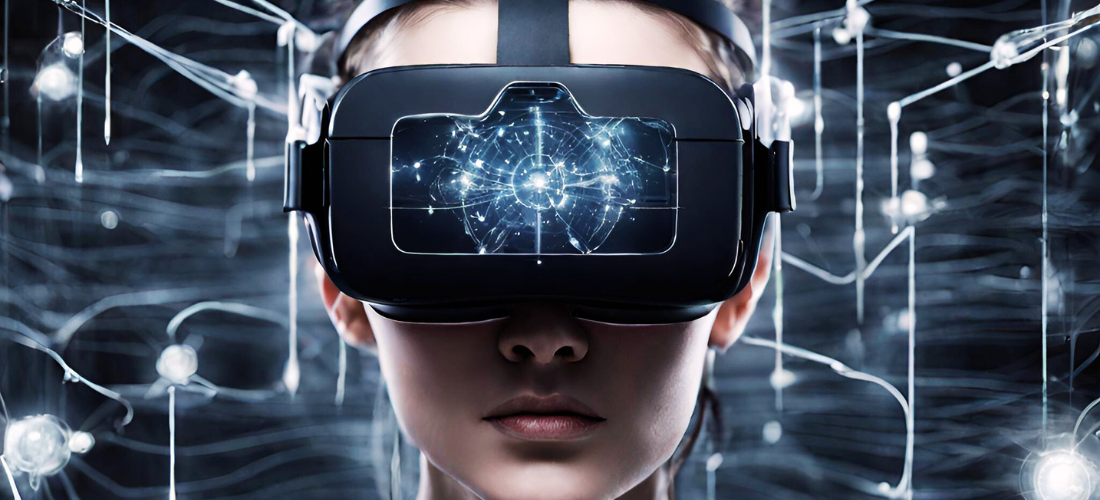
Development of Advanced Interfaces
The development of Advanced Interfaces in the context of Brain-Computer Interfaces (BCI) with Artificial Intelligence (AI) marks a significant milestone in the convergence between the human mind and technology.
One of the most exciting areas in the development of advanced BCIs is the decoding of thoughts and emotions. Imagine being able to translate your thoughts into concrete commands to control devices or interact
with software. This is not science fiction; it is an ever-evolving reality thanks to BCIs. Researchers and developers are tirelessly working to improve the accuracy and speed at which BCIs can interpret and execute user thoughts.
The integration of BCIs with devices and systems is also a crucial component of advanced interface development. From assistive systems for people with disabilities to entertainment applications like virtual reality, BCIs are opening up a world of possibilities. The idea of controlling a wheelchair, a prosthetic, or a gaming interface with the power of the mind has become a reality that enhances the quality of life for many.
In the field of healthcare, Advanced Interfaces are proving to be an invaluable tool. For example, BCIs can be used to enable people with paralysis to communicate by generating text or voice from their thoughts. This not only improves their communication abilities but also restores a crucial part of their autonomy.
In addition to medicine and rehabilitation, Advanced Interfaces have applications in education and research. Researchers can use BCIs to gain a better understanding of how the human brain works, and students can benefit from enriched learning environments with brain-machine interfaces that facilitate knowledge assimilation.
The development of Advanced Interfaces in the context of BCIs with AI is radically transforming how we interact with technology and how technology understands us. From thought decoding to device integration, these interfaces are improving the quality of life, opening new opportunities, and redefining our relationship with the digital world.
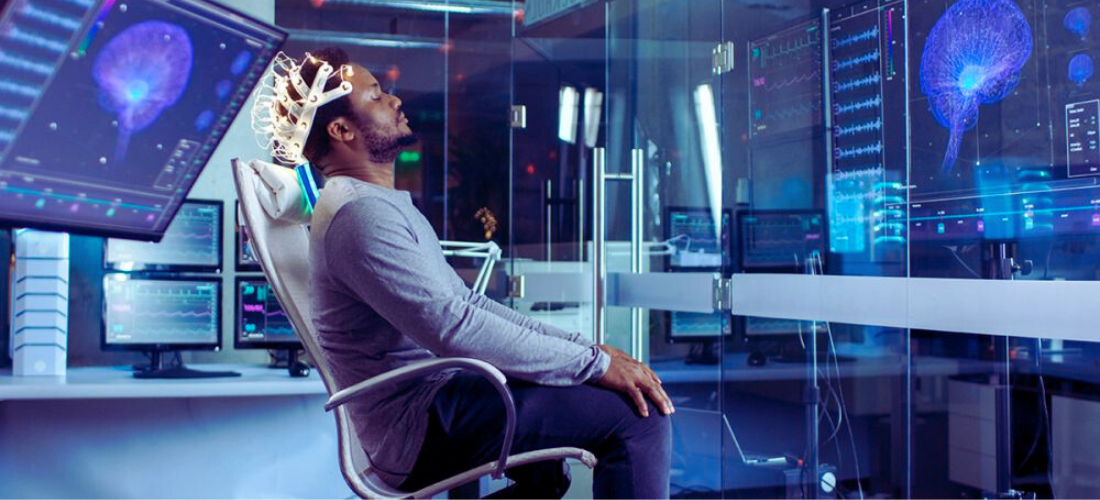
Challenges and Limitations
While Brain-Computer Interface (BCI) with Artificial Intelligence (AI) promises an exciting and full-of-possibilities future, it is not without technical, ethical, and practical challenges that must be approached with attention and care.
One of the most pressing challenges in the field of BCIs is accuracy. Although technology has significantly advanced in the interpretation of brain signals, further refinement is still needed to achieve exceptional accuracy in translating thoughts into actions. Individual variability in brain signals and the adaptation of BCIs to each user are significant challenges that must be overcome.
The security and privacy of brain data are also crucial considerations. BCIs collect highly personal and sensitive data, raising concerns about who has access to this information and how it is used. Ensuring user privacy protection and data security is fundamental for the acceptance and trust in this technology.
From an ethical perspective, BCIs raise profound questions about autonomy and consent. What is the extent of influence that a BCI can exert over an individual's decisions and actions? How can we ensure that people using BCIs fully understand the implications of their use? These are important questions that require careful debate and regulation.
Additionally, the cost and accessibility of BCIs remain significant limitations. Currently, many of these technologies are expensive and not available to most people. Overcoming these barriers and ensuring that BCIs are accessible to a wide range of users is essential to harnessing their full potential.
Lastly, in the field of medicine, comprehensive research and clinical studies are needed to demonstrate the effectiveness and safety of BCIs in specific medical applications. This takes time and resources, meaning that widespread adoption of BCIs in the field of health may require an extended period.
Although BCIs with AI have the potential to revolutionize how we interact with technology and improve the quality of life for many, they are not without challenges. Accuracy, security, privacy, ethics, accessibility, and clinical validation are key issues that must be consistently addressed to ensure that this technology is developed responsibly and its full potential is realized.
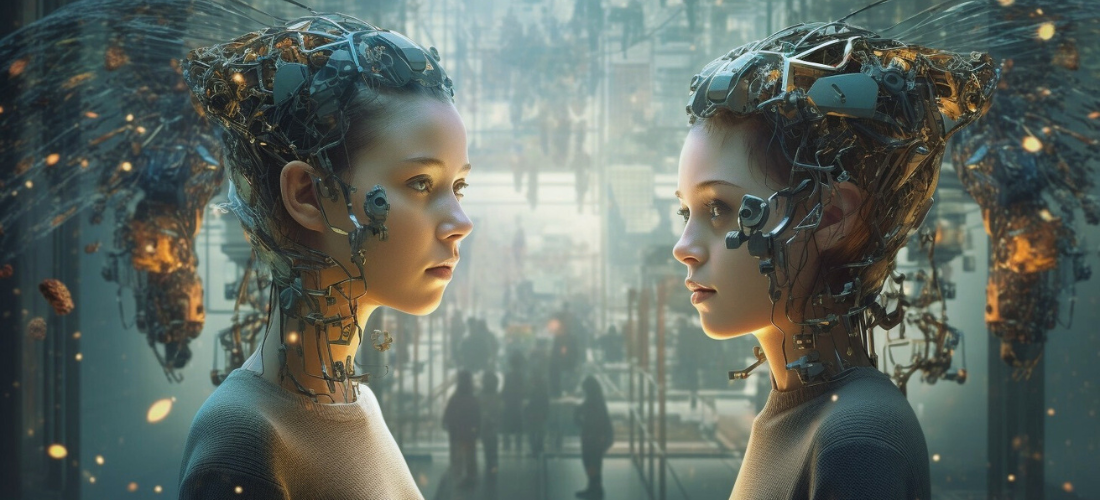
The Future of BCI Technology
The future of Brain-Computer Interface (BCI) technology with Artificial Intelligence (AI) is a horizon filled with innovation and promise. As this discipline continues to advance by leaps and bounds, we find ourselves at a turning point that redefines how we interact with technology and the world around us.
One of the most exciting directions that BCI technology is taking is the continuous improvement of the mind-machine interface. As research and developments accelerate, we can expect more compact and comfortable BCIs that seamlessly integrate into our daily lives. Imagine a world where BCIs are incorporated into contact lenses or even minimally invasive brain implants, providing people with immediate and discreet control over devices and applications.
In the field of health, BCIs have the potential to radically change the landscape for individuals with motor or neurological disabilities. Restoring mobility and communication for these individuals is a significant goal, and advanced BCIs are paving the way for greater autonomy and quality of life. Additionally, applications in healthcare are being explored to monitor and treat neurological disorders, such as epilepsy or Alzheimer's, which could lead to earlier diagnoses and more effective treatments.
In the world of technology and entertainment, the possibilities are endless. From creating fully immersive virtual reality experiences to enhancing workplace productivity through mind control of devices, AI-powered BCIs are opening new dimensions of digital interaction.
However, the future of BCI technology is not limited to individual applications. As this technology matures, social and ethical implications are also being explored. Debates about data privacy, security, and equity in access to these technologies are ongoing and will continue to be important topics of discussion as BCIs become more commonplace.
The future of BCI technology is extraordinarily exciting. This revolutionary fusion of the human mind and AI propels us toward a world where communication and control are redefined in an entirely new way. As challenges are overcome and technology becomes more accessible, BCIs are on track to become an ubiquitous tool that enhances people's lives and changes how we interact with technology and the world around us.
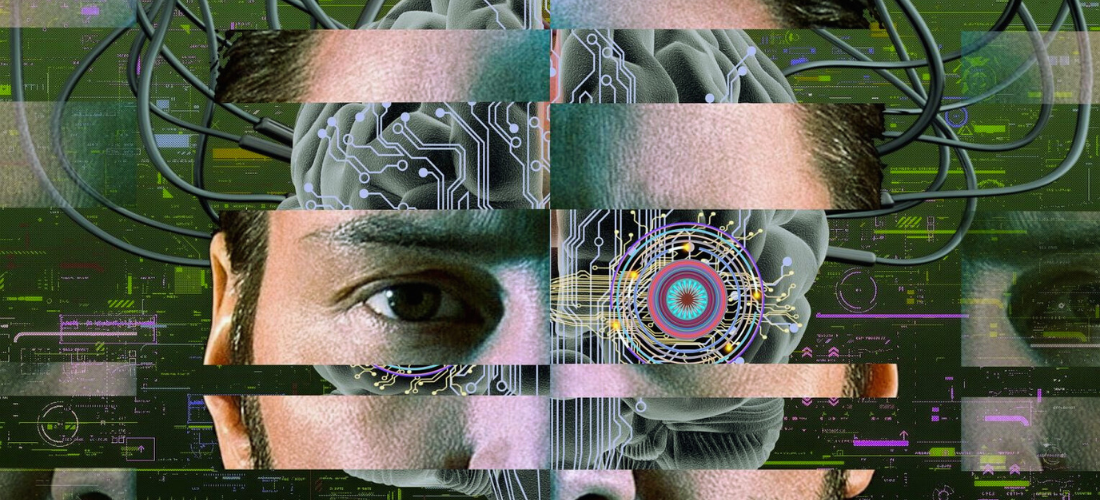
Conclusion
In this journey through Brain-Computer Interface (BCI) technology with Artificial Intelligence (AI), we have explored the depths of a technology that merges the unique capacity of the human mind with the innovation of artificial intelligence. As we conclude this journey, it is important to reflect on the impact and potential that this innovative discipline holds for our lives and the future of technology.
BCIs represent an extraordinary achievement in computer engineering and neuroscience. These interfaces open up a new world of possibilities in mind-machine communication and the improvement of people's quality of life. From enabling those with disabilities to regain mobility and independence to revolutionizing how we interact with technology, BCIs are at the forefront of a technological revolution.
The integration of AI into BCIs is a testament to how collaboration between science and technology can achieve significant advancements. Machine learning algorithms and deep neural networks have taken the interpretation of brain signals to an unprecedented level of precision, allowing thoughts and intentions to be translated into concrete actions.
However, as we celebrate these achievements, we must also confront the challenges and ethical considerations that accompany this technology. Data security, privacy, and ethical issues related to consent and control are crucial issues that must be addressed responsibly.
The future of BCIs with AI is a territory of exciting possibilities without limits. As this technology continues to evolve, we can expect more sophisticated interfaces, astonishing applications, and a greater impact on medicine, technology, and society as a whole. Nevertheless, we must also maintain an open and reflective dialogue about how this technology will shape our lives and our relationships with machines.
Ultimately, BCIs with AI represent an ongoing journey of discovery, innovation, and pushing boundaries. As we move toward a future where the human mind and artificial intelligence converge more deeply and meaningfully, we stand at the cusp of a revolution that redefines how we think, act, and experience the world. We are ready to take the next step in this exciting journey toward the future of technology.
